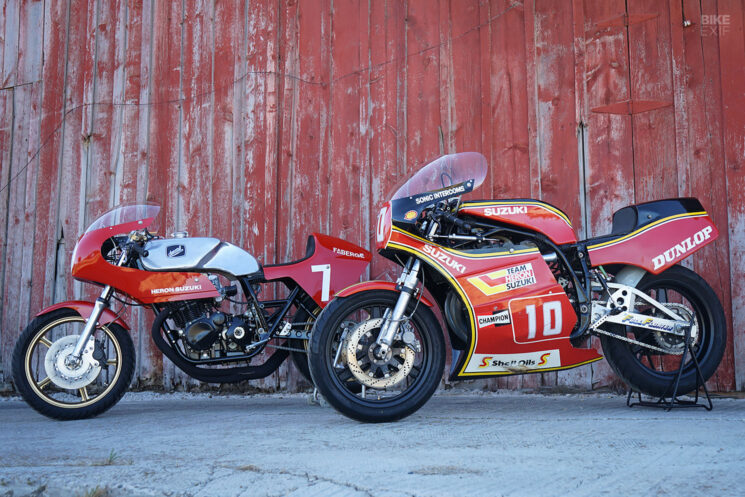
Some partnerships are just meant to be. Take Union Motorcycle Classics out of Nampa, Idaho, for instance, as the pairing of Mike Watanabe and Luke Ransom regularly brings about some of the highest-quality motorcycle restorations undertaken behind barn doors. Furthermore, Union has struck up the perfect relationship with a discerning client who regularly hauls in storied race machines in need of thorough reconditioning.
It was for this unnamed client that Union just finished working their magic on a pair of remarkable F1-racing Suzukis—a Dunstall-prepped 1979 GS1000 raced by Barry Sheene and a 1982 Works XR69 raced to several podium finishes by Mick Grant. While the bikes were acquired separately, their history flows through a common vein, making for a rare opportunity to study Suzuki’s Formula 1 racing development.
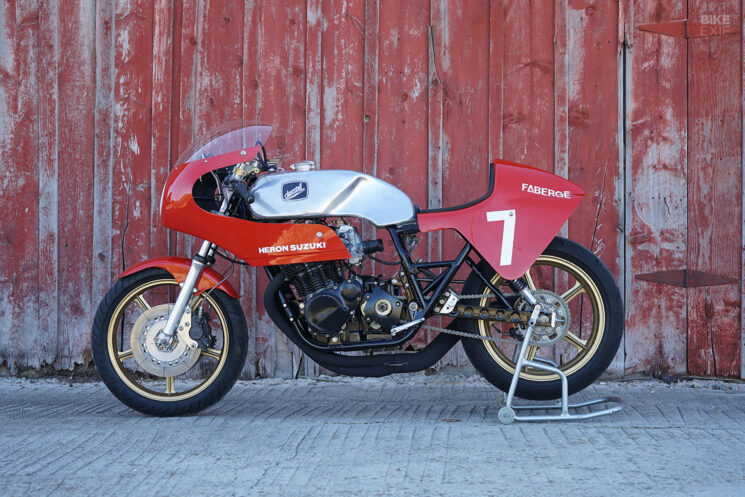
Ex-Barry Sheene 1979 Suzuki GS1000 With a more advanced chassis than its competitors (Honda) and a reliable, overengineered powerplant, Suzuki’s new GS750 showed great promise for road racing, and the story goes that it was legendary tuner Hideo ‘Pops’ Yoshimura who put things into motion.
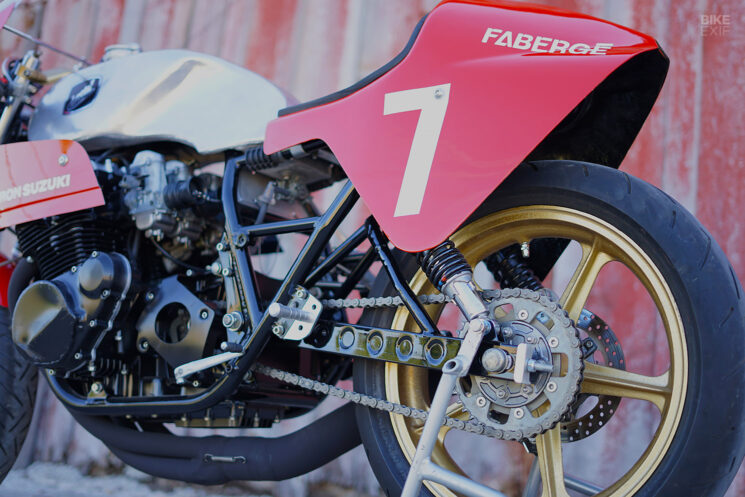
Pops had been perfecting his Formula 750 racers, but when the rules changed to allow 1,000 cc displacements in 1977, Suzuki increased its involvement to put together a better package to handle the 115 hp engines Pops was crafting. Suzuki donated complete front ends from the RG500 XR34 Grand Prix bike to provide surer footing, followed closely by a braced swingarm. Quickly becoming a winning combination, Yoshi-prepped GS1000s won the ’78 Daytona Superbike race and the Suzuka 8 Hours in Japan.
By 1979, UK importer Heron Suzuki wanted in on the action, and they asked famed UK tuner Paul Dunstall to field their Yoshi-prepped bikes. Barry Sheene was Heron’s top rider but had a known disdain for heavy four-stroke bikes—having famously called them ‘muck spreaders.’
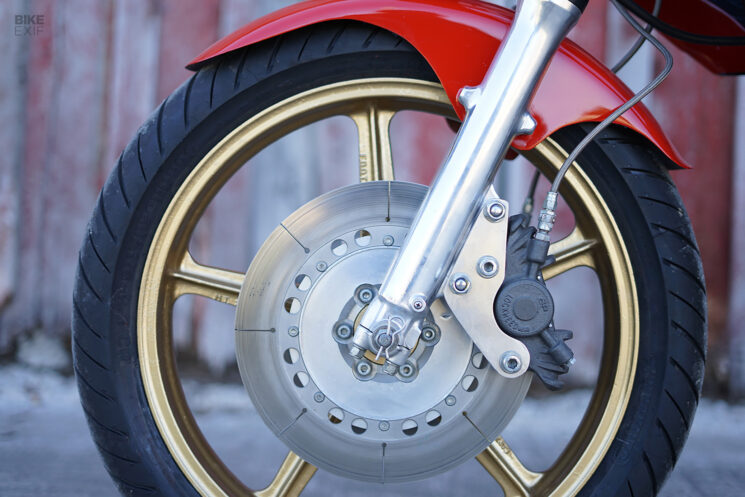
Despite Sheene’s pointed opinion, he piloted the Dunstall/Heron Suzuki to a close second-place finish at Oulton Park, right behind Honda’s Ron Haslam with Mick Grant taking third for Honda. Sheene didn’t race the bike again, and it’s said to be one of the only four-strokes he ever ran, but the writing was on the wall for Honda that victory in the 1,000 cc class was no longer assured.
The ex-Barry Sheene Suzuki remained in somewhat original condition, having been restored in the 1990s with a full Heron livery. While it was suitable for display at prominent events, the bike was destined to return to its Barry Sheene Oulton Park condition, and that’s exactly the task Union Motorcycle’s client consigned them to perform.
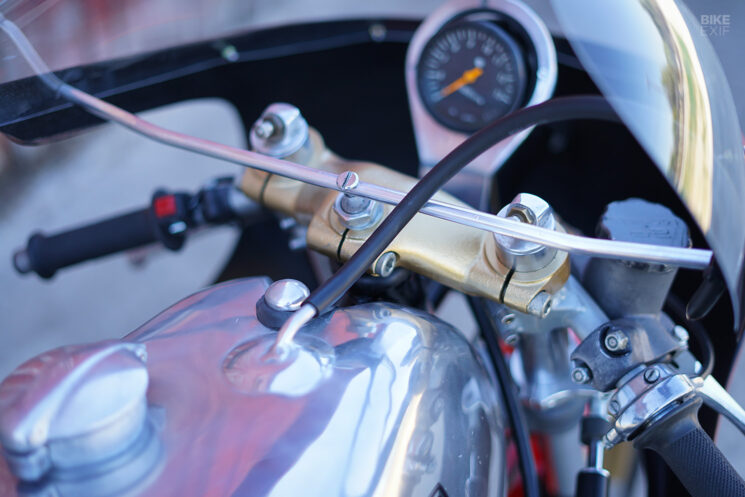
While the paint, fairing and tail section had clearly been altered, a full teardown of the bike revealed additional faults. Mike Watanabe relates “The tank had been buried in bondo somewhere in its back story, and I had to cut it in half and rework it. It appears to have been crashed at some point, but I carefully retained all the original ‘imperfections.’ Keeping those original fingerprints from initial construction was important to honor the bike. The tank is shown now in raw aluminum, like all photos of Sheene racing it.”
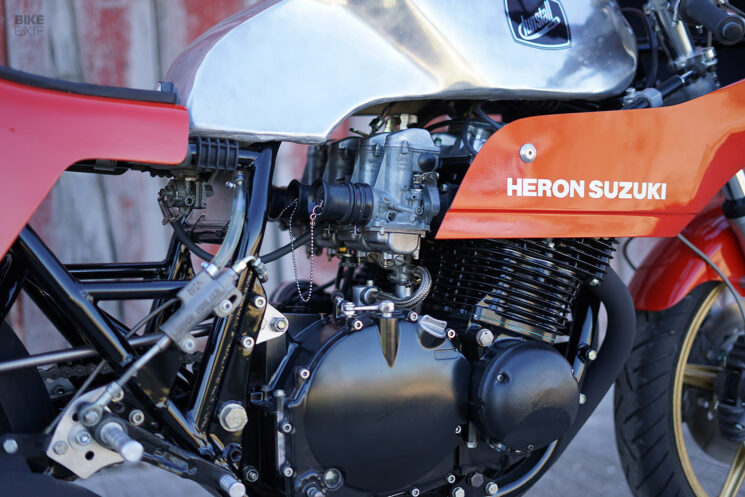
The seat was also the incorrect version, and with an original being unsourceable, Mike made a plug after carefully studying photos before laying it up in fiberglass. Union’s Luke Ransom sourced a correct faring for the bike, but it was missing the return flange that connects the upper and lowers. Mike then shaped aluminum forms to use as molds so the flange could be glassed back in.
Turning their attention to the powerplant, the GS had remarkably retained its No.13-stamped Yoshimura engine, and Luke tore the entire engine down to verify its condition. Fit with special cams, larger valves and high-compression slipper pistons, the 114 hp mill was deserving of special treatment, and Luke took it to California to meet long-time Yoshimura employee Don Sakakura to verify its heritage and specs before reassembly.
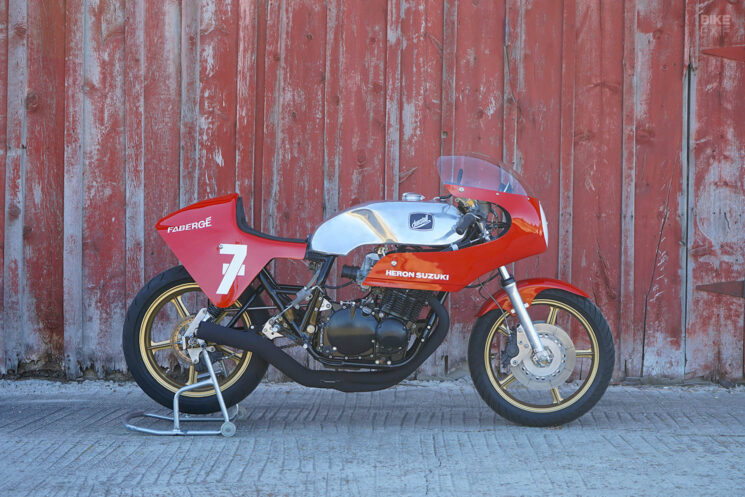
With its chassis and bodywork restored to Barry Sheene-spec, the bike was ready for finishing touches, and Luke laid down the striking red paint on the finished fiberglass bits. From there, Mike painstakingly recreated the mismatched numerals and sponsor decals. The perfectionist in you may shutter, but that’s how Barry raced it, and that’s how it needed to be.
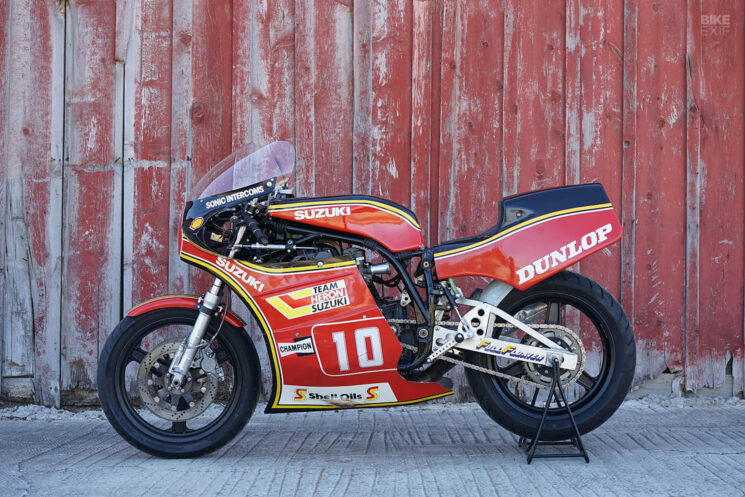
Ex-Mick Grant 1982 Works Heron Suzuki XR69 The GS1000 was knocking on Honda’s door by the late 1970s, but as Suzuki continued to upgrade the 987 cc, DOHC four-cylinder (and Pops subsequently worked his magic), it was clear a serious replacement for the GS steel double-cradle frame was needed.
Pops himself allegedly designed the new tubular chromoly chassis, again making use of the XR-series suspension, and engine output at this time was exceeding 130 hp. Sharing few components with the road-going GS, the new racers were dubbed the XR69s and were first seen at the 1980 24 Hours of LeMans.
The bike was almost immediately successful, winning Daytona and the Ulster Grand Prix and taking second at the Isle of Man. Late to the TT F1 party, factory rider Graeme Crosby squared off with Honda’s Mick Grant, securing the TT F1 Championship but falling just short of Grant in the British Championship. Crosby would capture both titles in 1981, and by ’82 Grant was signed to Heron-Suzuki.
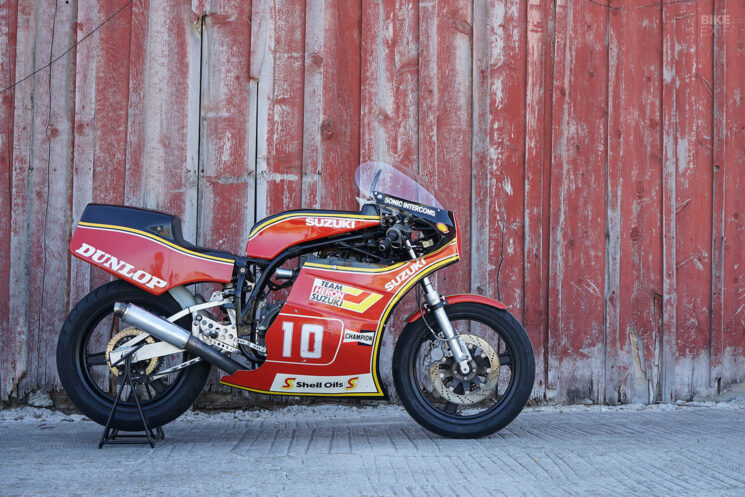
While the XR69 proved to be a dominant force in 1982, tragedy struck at North West 200, when Grant’s Heron-Suzuki teammate John Newbold clipped Grant’s rear wheel and passed away in the ensuing wreck. Shaken, but able to continue, Grant won the event and donated his prize money to Newbold’s widow.
Honda returned in a big way for the ’83 season with Wayne Gardner winning the British TT F1, but Grant and Heron-Suzuki teammate Rob McElnea were frequently in podium positions. Grant’s best finishes that year included second at the Isle of Man TT and Ulster Grand Prix, and third in the British TT F1 Championship. With displacement limited to 750 cc for the 1984 season, the XR69s were hung up for good, and Suzuki gifted Grant his works XR upon his retirement in 1985.
Believed to be one of just six like it, Mick Grant’s ’82 XR boasts exceptional originality and specification. It was assembled with a dry clutch, single rear shock, twin plugs and billet forks. The bike still wears its Heron-Suzuki livery from the 1980s, along with its magnesium carburetors and fasteners. One of his most prized possessions for 35 years, Grant relayed that it still performs as Suzuki intended, and that it’s in every way the bike he piloted in the North West 200, the Macau GP and set the lap records at the Isle of Man and Donington Park.
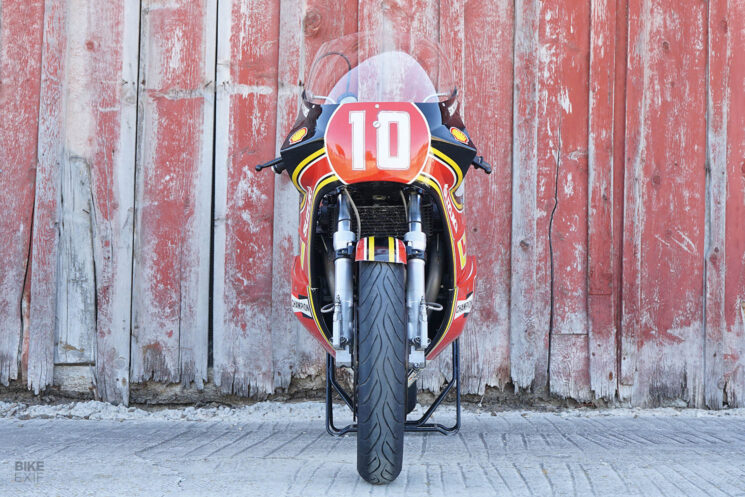
Union Motorcycle’s discerning client acquired the bike from Grant, likely at Bonhams’ Spring Stafford Sale in 2019, and brought it in for a thorough once over. Destined for a new owner who intends to return the bike to the track, prepping it involved a whole lot more than just going through the carburetors and fluids. Knowing where to draw the line, the Ex-Grant XR69 still wears a few bumps and bruises from its heyday but has been certified fit for competition once again.
With two priceless pieces of Suzuki F1 history returned to their former glory, we’re certain a pair of old racers somewhere are smiling. That’s doing the Lord’s work if you ask us.
Photos courtesy of Union Motorcycle Classics | Facebook
from Bike EXIF https://ift.tt/SXo9hNt
No comments:
Post a Comment